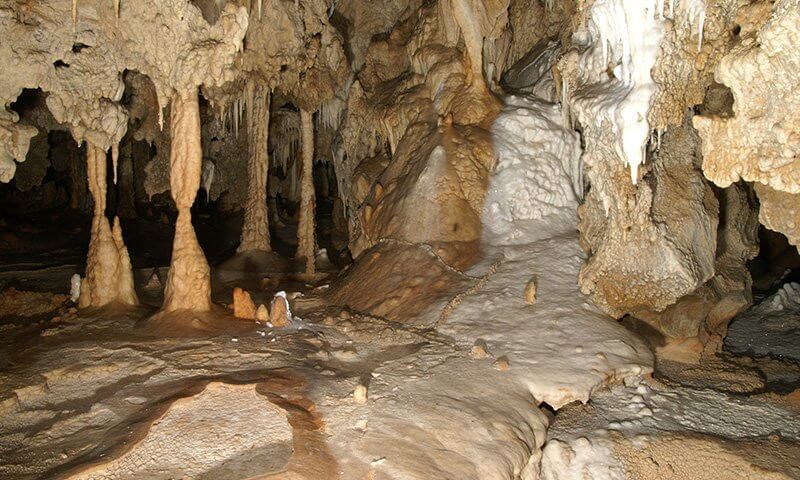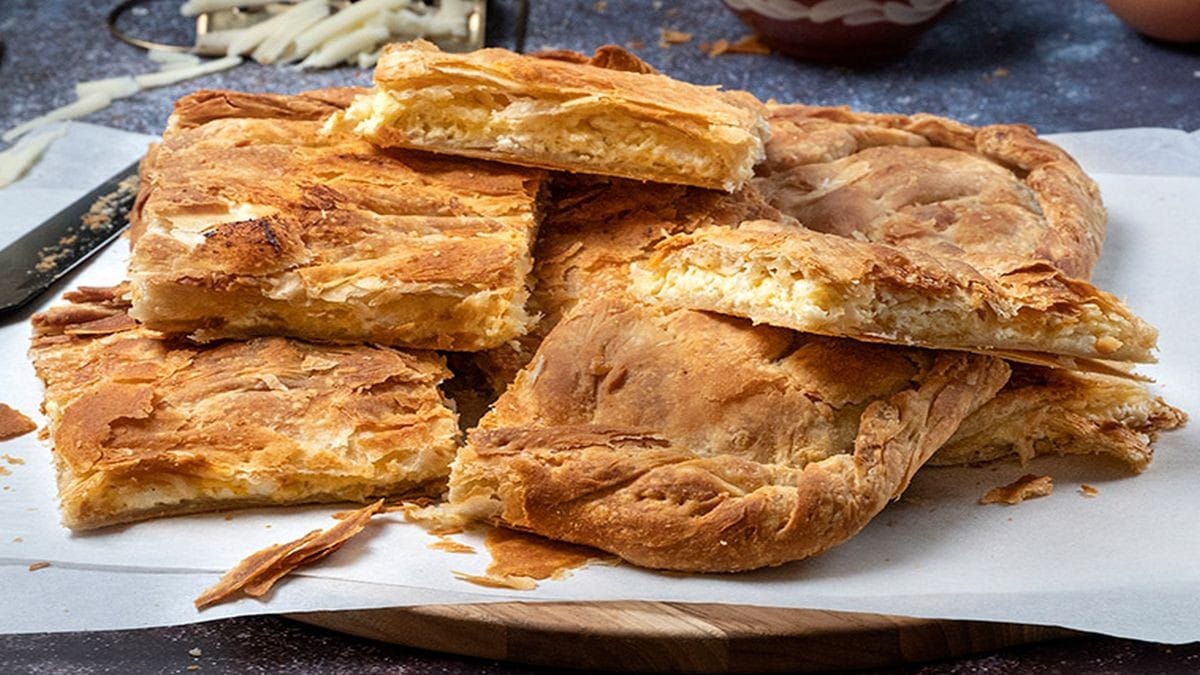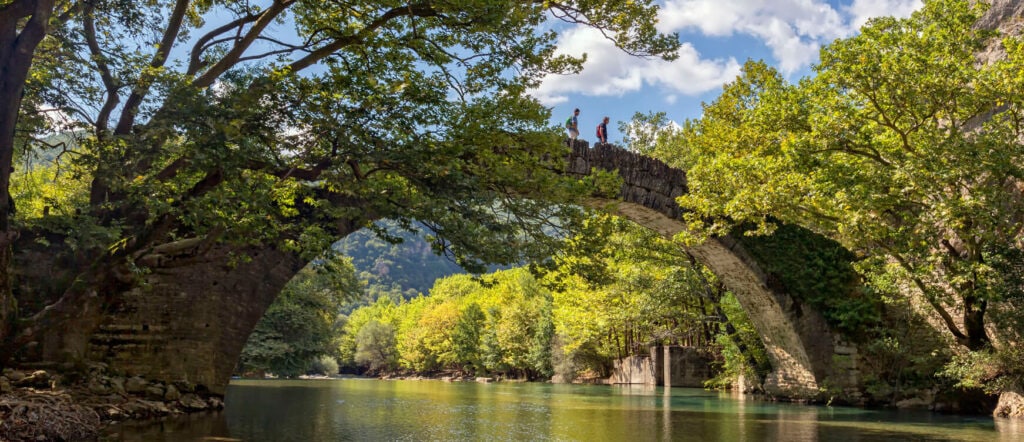Epirus comprises 4 counties: Arta, Thesprotia, Ioannina, and Preveza.
Pindos is the largest mountain range in Greece and crosses the whole of Epirus. A mountainous territory, with harsh climate conditions but with a very rich natural landscape and a coarse but generous human nature that will win you over and you’ll never want to get away!

A land that has raised conscientious and hardworking people many of whom became national benefactors, it is also the paradise for pies and altogether rich gastronomy: 31 pies have been documented in just 15 villages of Epirus. They are made by housewives to welcome visitors, to feed craftsmen and workers but also as a variation to everyday cooking.
Ioannina is the capital of Epirus. Built on the shores of lake Pamvotis it features a spectacular fortress and old city, a traditional silver craft that is still found in shops today, and a wealth of cultural and educational sites, including the University.

The fortress and lake shore walkway is a must as well as the island of “Kyra Frosyni” in the middle of the lake, with relics of the Ottoman period, cobbled streets, and restaurants offering local specialties. You may try crayfish with a walnut garlic sauce, frog legs, and trout in butter.
The center of Ioannina has wonderful nightlife with plenty of bars and cafes and excellent food. It is also a paradise for those with a sweet tooth: a wide variety of sweets based on filo pastry, butter, nuts, and syrup all dating back centuries in Greece’s culinary history.
A special dish of Ioannina: eel with bay leaves. The eel fillets are placed on convex ceramic tiles with bay leaves between them and the lot is covered and sealed with dough at the edges, so the bay leaves give their aroma to the fish.

Do not miss a visit to the Perama Cave (“Spilaio Peramatos”) on the outskirts of the city: one of the most impressive caves in Greece and Europe with spectacular formations. The underground route open to visitors is 1100 meters long.
Traveling north of Ioannina towards the region of Zagorohoria you will discover 46 beautiful villages set on the slopes of Pindos. Characteristic of the area is the stone-based architecture of the houses and churches and the arched stone bridges across the rivers that flow through it. The region has raised the best stone masons in Greece, while most villages are now protected as monuments of cultural heritage with many houses restored to function as guest houses.
The Vikos gorge is a protected natural park due to its rich flora and fauna, while “Valia Calda” (warm valley) offers beautiful trekking opportunities for those with a naturalist streak.
Voidomatis (“bull’s eye”) river is considered one of the cleanest in Europe and forms part of the natural park. In summer you may swim in the crystal-clear pools that run down the slopes of Pindos.
Of the numerous villages, I would especially point out: Vitsa, Monodendri, Aristi, Papingo, Kipoi. You should also do the Skala Vradetou (“Vradeto’s stair”) walk: a stone-built footpath joining two small villages (Vradeto, Kapessovo) which will give you the best experience of yesteryear transport. For food, I would recommend the village of Ano Pedina.

Most distinguished pies:
1) Alevropita: a welcoming pie for guests made with a rich flour batter (flour, milk, eggs, butter) and feta cheese. It is consumed hot out of the oven.
2) Pispilita or Blatsaria: a pie with various wild greens and ground corn (in place of filo), cheese, “trahana”, olive oil, and butter. Wild greens are replaced by nettles in some cases.
3) Kassiata: a rich fyllo-based pie that resembles a cheesy millefeuille!
4) Mindita: a savory squash pie made with ground corn, “trahana”, feta cheese, butter, and olive oil.
5) Strifti: “twisted pie” made with fyllo pastry, leeks, trahana, feta cheese, butter and olive oil.
6) And the crown of all pies: “pita with zigouri” a meat pie made with meat from a fully grown lamb to celebrate the carnival season. Many layers of filo pastry, the pre-cooked and boned meat mixed with “trahana”, eggs, milk, and aromatic herbs.
7) “Galatopita” (Milk pie): a sweet pie made with filo pastry, eggs, butter, and milk. In some villages of Zagorohoria you will also find wild boar oven-cooked with wine and aromatic herbs in winter.
Vegetables and greens: the slopes of Mount Pindos are very rich in wild greens and aromatic herbs which give a unique taste to lamb and goat meat. Most of these greens are used in pies or other local dishes: Seskoula (beta vulgaris), poppy leaves, wild chard, zochos (Sonchus oleraceus), nettles, spinach, wild carrot, lapatha (Rumex), kafkalithra (Tordylium apulum).




